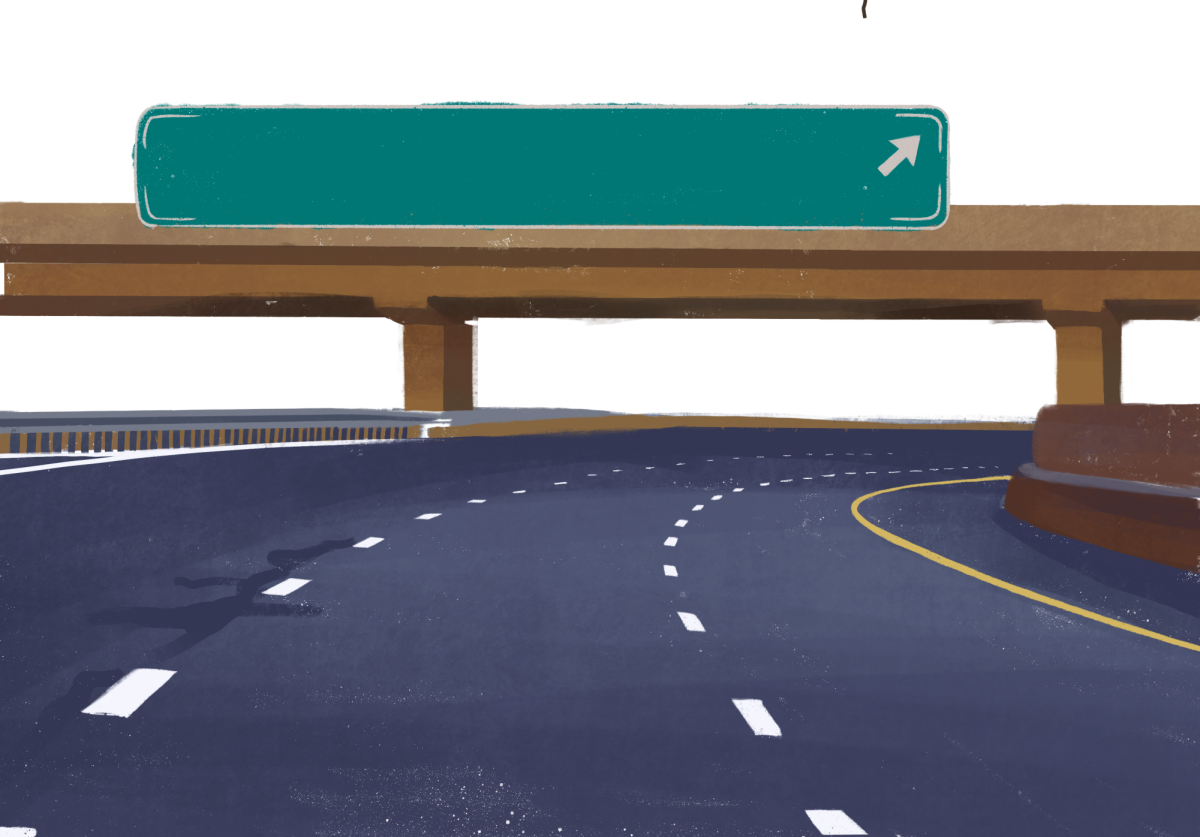In 2019, local real-estate company Barshop and Oles partnered with finance firm Lionstone Investments to take on the task of redesigning the Brodie Oaks Shopping Center, located in South Austin.
Brodie Oaks’s spread-out style retail has remained largely unchanged since its opening in the early 1980s, but the new project plans to completely transform the area from sprawling retail to a self-sustaining community with a focus on affordable housing, walkability, and ecological revitalization, according to the project’s website. The production team plans to finish designing and permitting by 2025 when they will begin construction.
Abby Gillfillan is a planner for Lionheart, an urban planning company, and a contributing designer to the Brodie Oaks project. She hopes Brodie Oaks will become an integral part of the surrounding community.
“One of the things we wanted to do is to take single-use one-story retail and create one of those places that people in neighborhoods or schools close by really feel welcomed by and want to come and experience,” Gillfillan said.
The Brodie Oaks project plan includes approximately 70 units of affordable housing scattered across the development. Orla Tower, a freshman at LASA, lives in South Austin and supports the idea.
“I think that the affordable housing will be good for the community because the housing prices in my neighborhood are just going up and up as more mega-rich people move in,” Tower said. “I mean, people who have lived here in Zilker for a while are being priced out of their own homes because it’s so expensive.”
One of Brodie Oaks’s main goals is to be a more ecologically sound development project, especially considering its vicinity to the Barton Creek Greenbelt. Gillfillan feels that this concern was a vital part of their planning process and was important to creating a development more respectful to the local ecosystems.
“One of the things that we always knew going in was that this was a really environmentally sensitive site,” Gillfillan said. “Something that we were always really thinking about is how we can make sure that when this site redevelops, it’s a really good steward to the Barton Creek Greenbelt there.”
The project is committed to a 54% reduction of impervious cover, which is any surface that water cannot pass through. Matt Bartos, a professor of civil engineering at the University of Texas at Austin (UT) who focuses on water resources, sees how this reduction could help the local environment.
“Impervious areas like parking lots, roads, and sidewalks accumulate a lot of gunk and contaminants,” Bartos said. “Those contaminants wash off into the waterways and cause problems for the aquatic wildlife.”
This awareness also applies to how Brodie Oaks proposes to use the water that lands on their site. Gilllfillan recognizes the innovative methods that the planning team is using surrounding water usage.
“The innovation behind it was really around how we treated water on the site because it’s an environmentally sensitive site,” Gillfillan said. “There’s the Barton Springs zone and there’s this SOS (Save Our Springs) ordinance that regulates that area. What this means is that every drop of water that lands on the site has to be fully treated before it runs off of the site. One of the innovations we did was develop a new way to meet that SOS standard, which is instead of capturing the water, treating it and then just spraying it out on the ground. We’re capturing the water, treating it, and then reusing it in the buildings.”
Bartos also sees the importance of Brodie Oaks’s innovative ideas surrounding water usage. He believes that the redistribution of water can help the process of quality control.
“Rainwater harvesting benefits just by reducing hydraulic load, which can cause all the water quality problems,” Bartos said. “You’re basically just storing some of that water so it doesn’t flow downstream and pick up contaminants causing flooding and stuff like that.”
The Brodie Oaks project is still in the planning stages of development. Gillfillan noted the next steps in the project after planning, from permitting to eventually beginning the actual construction.
“It usually takes about a year to get all the construction documents together, and then, after that, it would be moving into getting permits through the city, and then starting to build construction,” Gillfillan said. “So it’s probably a good two years away from any dirt moving out there on the site.”
The Brodie Oaks project is currently in phase four, with two more stages and another three years before it opens up for operation. Tower sees this as a negative to the new reconstruction.
“My only complaint about the rebuild of Brodie Oaks is how long it’s going to take, so I won’t really get to use it for a while,” Tower said. “Also there’s going to be a lot of construction which is never really fun. But I think the positive effects still outweigh the negative.”
Despite the grievances, Brodie Oaks is still considered “the most environmentally sensitive project of its scale currently planned in the city” according to TOWERS Reality, a real estate brokerage in Austin. Gillfillan recognizes how vital it was that the development team aimed to meet their objectives and create something unique.
“Meeting the highest environmental standards was really important,” Gillfillan said. “And also really starting to think, ‘how can this large new development really be forward thinking when it comes to things like zero carbon, zero water, in this development of the future’.”
Brodie Oaks plans to be open for operation by the year 2027. For more information regarding the project, visit their website at brodieoaksredevelopement.com.




